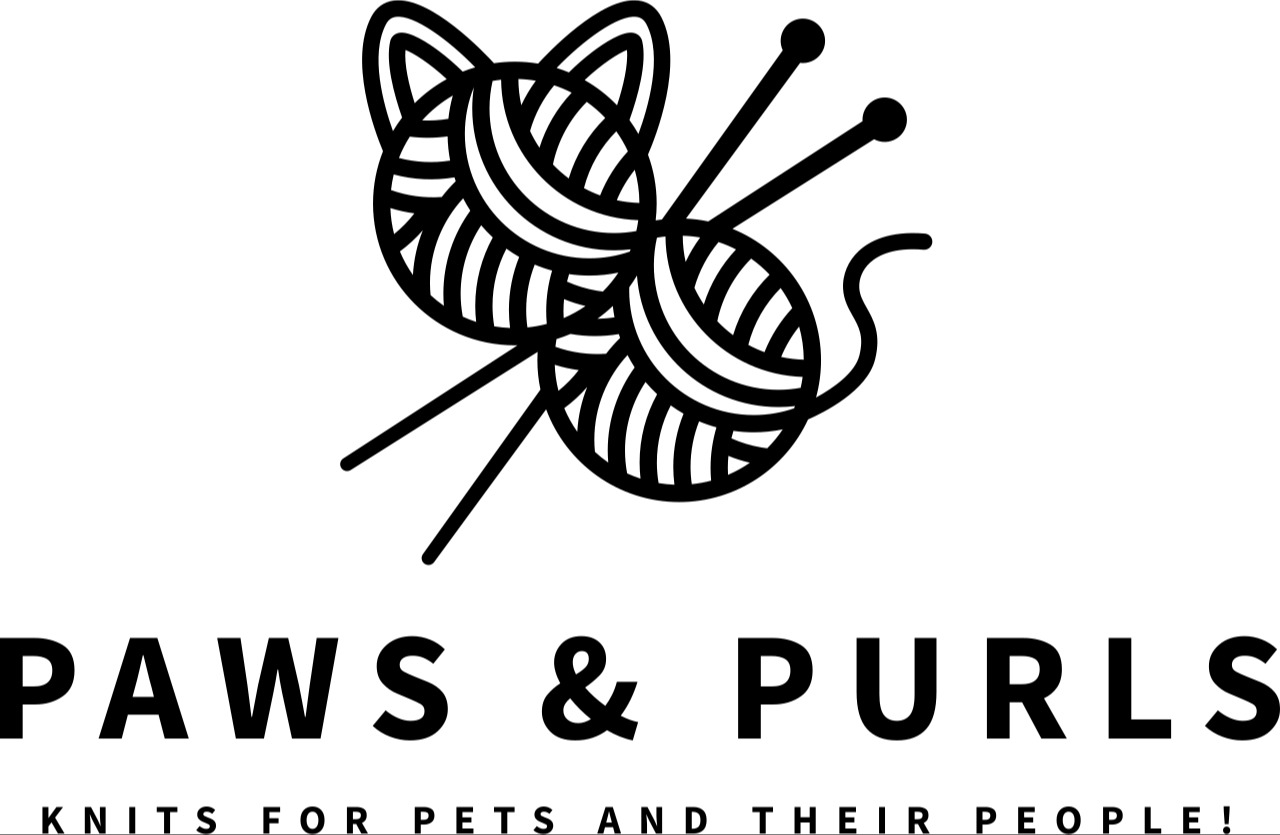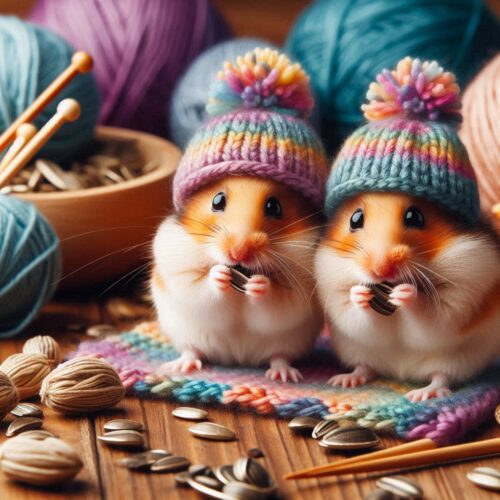Knitting for small pets can significantly enhance their quality of life in several ways. For starters, knitted items provide warmth, which is particularly important during colder months or in drafty spaces. Unlike store-bought items, homemade knitted products can be customized to perfectly suit your pet’s needs, ensuring they stay cozy and comfortable.
Comfort is another major perk. Soft, knitted materials can be more soothing than standard pet accessories. Think about it: who doesn’t love snuggling up in a warm, soft blanket? Your pets are no different! Knitting allows you to use pet-friendly yarns that feel gentle against their fur and skin, upping the comfort factor significantly.
Mental stimulation is a somewhat overlooked benefit. Knitted toys, for example, can provide endless entertainment and help keep your pet engaged, mentally sharp, and physically active. Small pets often love to explore new textures and shapes, making knitted items ideal for playtime.
Lastly, knitting gives you the opportunity to create personalized items for your pets. Whether it’s a tiny sweater for a guinea pig or a cozy bed for a bunny, the effort you put into crafting these items adds a special touch. Your pets may not realize the labor of love behind their new accessories, but they’ll definitely enjoy the results.
Safety Considerations
Using non-toxic, pet-safe materials is crucial. Pet-safe yarns and fabrics help avoid any harmful chemicals that might be in low-quality products. Opting for natural fibers like cotton or bamboo often works best.
Avoid small parts on knitted items. While buttons, beads, or sequins might make an accessory look cute, they can be choking hazards for small pets like hamsters and guinea pigs. Stick to simple designs to keep things safe.
Keep specific safety needs of different pets in mind. For example, rabbits might chew through certain materials faster than hamsters or guinea pigs. Regularly inspecting your knitted items for any loose threads or worn areas is a good habit to develop.
Regular checks for wear and tear can prevent accidents. Knitted items can show signs of wear over time, and it’s essential to catch these early. Loose threads or torn fabric can pose significant safety risks, so always be vigilant.
Materials and Supplies
When it comes to materials, focus on yarns and fabrics that are soft, non-toxic, and durable. Natural fibers like cotton, bamboo, and alpaca are excellent choices, as they are gentle on your pet’s skin and less likely to cause any irritation.
You’ll need a few essential tools to get started. Knitting needles or a crochet hook, depending on your preference, are obviously key. You might also want to have a measuring tape handy to ensure precise sizing, along with scissors for cutting yarn. Stitch markers can be incredibly useful for keeping track of your work, especially if you’re following a complex pattern.
Adding a touch of stuffing is great for making toys or cozy beds. Opt for non-toxic, hypoallergenic stuffing materials to ensure they are safe for small pets. If you’re considering closures for clothes or beds, velcro is a safer choice compared to buttons or zippers, which may pose a choking hazard.
Deciding on the right yarn thickness or fabric texture is also important. Thicker yarns create warmer, bulkier items perfect for winter, while lighter yarns are great for more breathable options during the summer months. Keep in mind the specific needs and preferences of your pet when choosing materials.
Patterns and Designs
Knitting for small pets opens up a world of creative possibilities. Simple patterns like cozy beds and snuggly blankets are great starting points. These can be made with basic knitting or crochet stitches, making them accessible even for beginners.
For more advanced crafters, toy patterns can add a touch of fun to your pet’s collection. Knitted balls, chew toys, and small stuffed animals are not only entertaining but also engage your pet’s natural instincts. Remember to use pet-safe materials and avoid small parts.
Don’t hesitate to get creative with clothing patterns. Tiny sweaters for guinea pigs or stylish little hats for hamsters can be both functional and adorable. Customizing these items to your pet’s size and personality brings out the best in your work.
Adapting patterns to fit the unique needs of your different pets is a valuable skill. Depending on the type of pet, consider their mobility and typical behavior. A blanket for a rabbit might need to be bigger and sturdier than one for a hamster, while toys for a guinea pig might require different shapes and sizes.
Lastly, consider the ease of use. Removable covers for beds or easy-to-put-on clothing make cleaning and maintenance a breeze. Simple closures like velcro or elastic bands are user-friendly and safe for pets.
Size and Fit
Accurately measuring your pet is key to crafting items that fit perfectly. A soft measuring tape works well for this purpose. Measure around their body, length, and any specific areas like the neck or legs if you’re making clothing.
Guidelines for different pets can help you get the right fit. Rabbits usually require more spacious items, while hamsters and guinea pigs need more compact and snug fits. Knowing your pet’s dimensions allows for better customization.
Adjustments for growing pets are important. If you’re knitting for a young pet that’s still growing, consider adding some extra room or using stretchy materials. This ensures the item will be comfortable for a longer period.
Remember, comfort is as important as fit. Avoid making items too tight or restrictive. Your pet should be able to move freely and naturally in whatever you create. Prioritize their comfort to ensure they enjoy using the knitted items.
Care and Maintenance
Cleaning knitted items depends on the materials used. Many natural fibers like cotton and bamboo can be hand-washed with mild soap and warm water. Avoid using harsh chemicals that could irritate your pet’s skin.
Machine washing might be an option for sturdier items, but always check care labels or test on a small section first. Placing the item in a mesh laundry bag can protect it from getting damaged in the wash.
Regularly inspect knitted items for signs of wear and tear. Pets can be tough on their belongings, and loose threads or holes can pose safety hazards. Prompt repairs can extend the life of your knitted creations.
For minor damages, simple stitching or patching usually does the trick. Keeping a small repair kit handy makes quick fixes easier. This is especially helpful for items that see a lot of use, like beds and toys.
Protecting knitted items from overuse is also essential. Rotating items and giving them time to air out can keep them in better condition for longer. Having a few extra pieces on hand ensures your pet always has something comfortable to use.
Pet Behavior and Preferences
Different pets interact with knitted items in their unique ways. Rabbits might enjoy snuggling into cozy blankets or gently chewing on knitted toys, while hamsters often appreciate small, intricate toys that they can explore and manipulate.
Textures and colors can make a big difference. Some pets have specific preferences – they might favor softer, fluffier fabrics, or certain colors could pique their interest more. Observing your pet’s behavior can clue you in on their likes and dislikes.
It’s important to monitor how your pet uses knitted items, especially in the beginning. Are they chewing too much on a blanket or ignoring a toy? These observations can guide you in making or adjusting items to better suit their needs.
Pay attention to signs of enjoyment or discomfort. A pet that regularly uses their knitted bed or plays with toys is a happy pet. Conversely, if they seem to avoid or struggle with an item, it might need some tweaking. Assess the situation and make necessary changes to enhance their comfort and engagement.
Community and Resources
There’s a strong, welcoming community out there just as passionate about knitting for pets as you are. Online communities, forums, and social media groups are fantastic places to start. You’ll find ideas, patterns, and plenty of support from fellow crafters.
Websites dedicated to pet knitting can provide a treasure trove of patterns and tips. Many feature step-by-step tutorials that are perfect for knitters of all levels. Sites like Ravelry have extensive pattern libraries where you can find inspiration and share your creations.
Books on pet knitting are another great resource. Many include easy-to-follow patterns and helpful advice on materials and techniques. Look for books specifically geared toward small pets to get the best results.
Sharing your creations isn’t just fun—it’s helpful. By posting in online groups or forums, you can get feedback and tips from others who’ve had similar experiences. This collaboration can lead to even better and more creative designs.
Engaging with the community also means giving back. Share your successful patterns and unique designs to help others in their knitting journey. It’s a wonderful way to learn and contribute to a growing collection of pet-safe, adorable knitted items.
Ethical and Responsible Knitting
Choosing ethically sourced materials is vital. Support brands and suppliers that prioritize sustainable and humane practices. Look for certifications or labels indicating eco-friendliness and ethical sourcing.
Environmental impact matters. Opt for natural, biodegradable yarns whenever possible. Avoid synthetic materials that can contribute to pollution.
Consider reusing and recycling materials. Old sweaters and blankets can be repurposed into new creations for your pets. This reduces waste and gives new life to unused items.
Promote sustainability by creating durable, long-lasting items. High-quality materials and careful crafting ensure that your knitting projects stand the test of time, reducing the need for frequent replacements.
Think about the broader impact of your knitting. By choosing to create eco-friendly items and supporting sustainable practices, you’re not only benefiting your pet but also contributing positively to the environment.


I absolutely love knitting for my pet rabbits! It’s such a rewarding hobby, and the handmade sweaters and blankets I make for them are always a hit. Not only are they cute and cozy, but they also provide extra warmth during the colder months. I highly recommend knitting for your small pets!
Knitting for small pets can be a fun and fulfilling hobby, but it’s important to keep a few things in mind. Make sure to use yarn that is soft and gentle on their skin, and avoid using any materials that could be harmful if ingested. Also, be mindful of the size of your projects to ensure they fit your pet comfortably.
There are countless creative possibilities when it comes to knitting for small pets. From simple sweaters and blankets to intricate hats and booties, the sky is the limit. I love experimenting with different colors, patterns, and textures to create unique and personalized pieces for my furry friends
That’s so sweet! Knitting for your rabbits sounds like such a heartwarming hobby. It must be amazing to see them snuggled up in your handmade creations. I love that you’re so thoughtful about the yarn and the fit—keeping them safe and comfy is so important. And experimenting with different designs sounds like a blast! It’s clear your rabbits are not only warm but also getting a lot of love from you. Keep up the fantastic work!